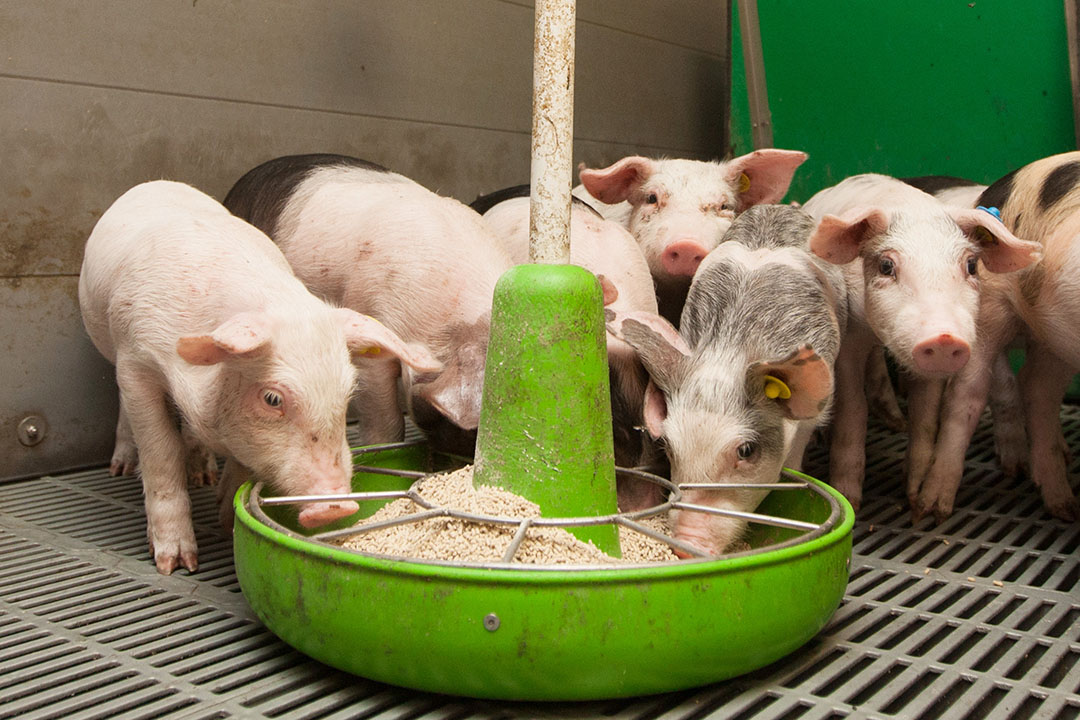New data on the use of poultry based PAPs in pig diets

13 Dutch companies and research institutes have started a public private partnership to increase the use of co-products and residues as feed materials. The consortium is especially interested to develop new local sourcing strategies and to improve the European self-sufficiency of feed resources. One of the first activities in the collaboration was a study on PAPs.
The results of this study show that the digestible protein content of the products was generally higher than in PAPs of unspecified animal origin in feed tables. This difference was mainly related to variation in nutrient contents and to a lesser extent to differences in digestibility. It was concluded that PAPs require a species-specific inclusion in feed tables. Recent data on the nutritional value are lacking because of the EU-wide ban to use PAPs in diets of food-producing terrestrial animals. European table values of PAPs, e.g. meat-and-bone meal, feather meal and blood meal have generally been established before the EU-ban on the use of PAPs in farm animal diets in 2001. Therefore, these values may not adequately reflect the nutritional value of the present PAPs.

New Proteins
Find out more about some of the protein alternatives for soy that are currently seen as promising for livestock and fish diets.
Determine the value of poultry-based PAPs in growing pigs
The aim of the study was to determine the nutrient composition, ileal and total tract digestibility and nutritional value of poultry-based PAPs in growing pigs. With participation of EFPRA (European Fat Processors and Renderers Association) members, products were selected and provided to reflect the PAPs presently available for animal diets.
The selected products included 3 poultry meals:
- with varying protein and ash content,
- feather meal
- poultry blood meal
The products were included in a basal diet and supplied to growing female pigs in 2 successive periods:
- focused on the phosphorus digestibility,
- aimed to determine the protein and amino acid digestibility in the ileum (small intestine) and the total tract digestibility of protein, fat, and energy.
The results indicate that:
- the poultry meals generally have a 5-15% higher protein content with about equal digestibility compared to meat meal and meat and bone meal of unspecified animal origin in feed tables.
- the amino acid pattern and the digestibility of protein and fat of poultry meal was related to the ash (bone) content in the product.
- poultry blood meal deviates in amino acid and mineral content from blood meal of pigs and ruminants.
Also read: Turning feed waste into poultry protein
Overall, this study provides new data on digestibility and nutritional value for the use of poultry based PAPs in pig diets, specifically poultry meal, blood meal and feather meal. Inclusions of up-to-date values for nutrient content and digestibility of these poultry by-products in feed tables will allow their optimal use in pig diets when future EU legislation allows the use of PAPs in farm animal diets.
ConsortiumABZ Diervoeding, AgruniekRijnvallei Voer BV, Bonda’s veevoederbureau BV, Coppens Diervoeding, Darling Ingredients International Rendering and Specialties BV, EFPRA, Feed Design Lab, Noblesse Proteins, Nijsen/Granico BV, SARIA International GmbH, Schothorst Feed Research, Vitelia Voeders BV and Wageningen Livestock Research started the 4-year programme “Circular Bio-economy”. This collaboration is embedded within the Dutch Topsector Agri&Food (TKI-AF-17027). |











